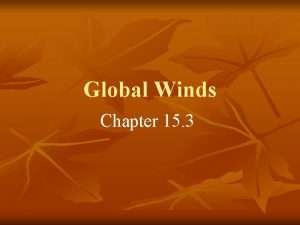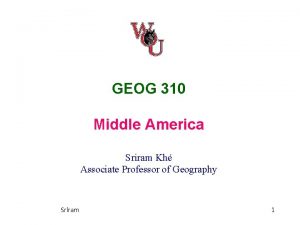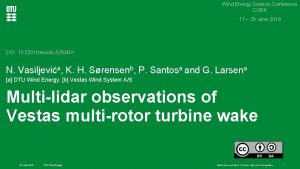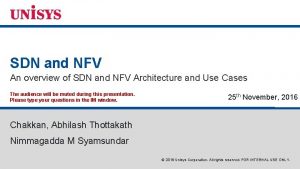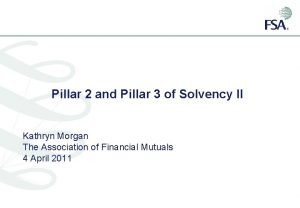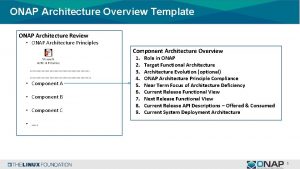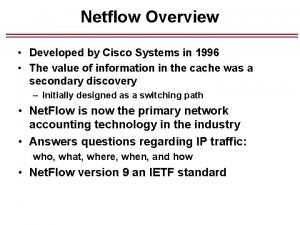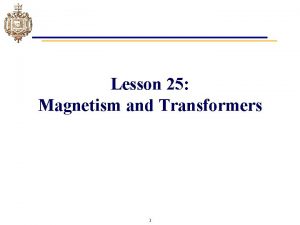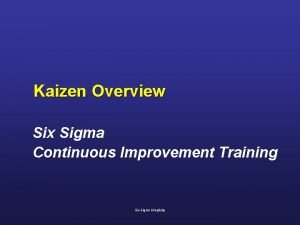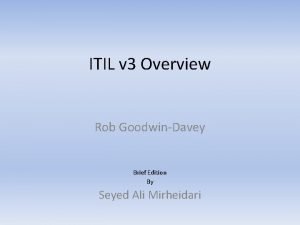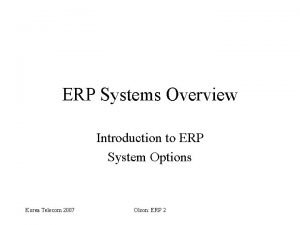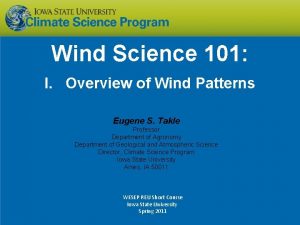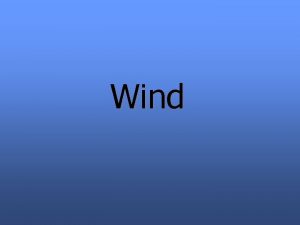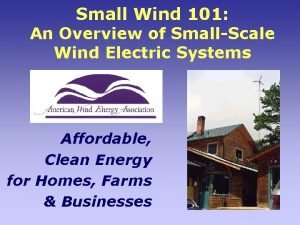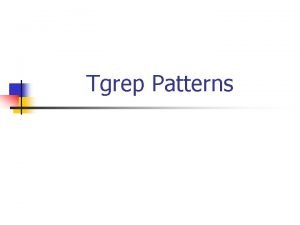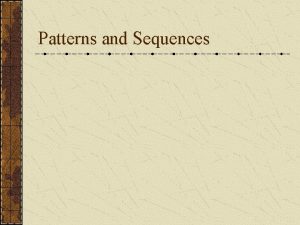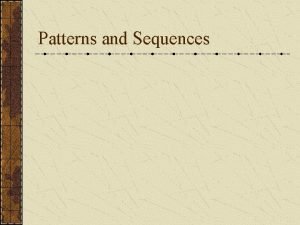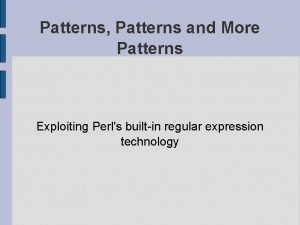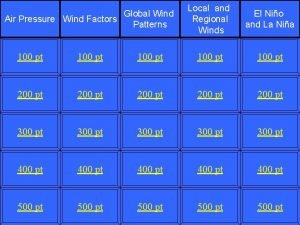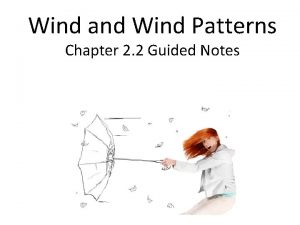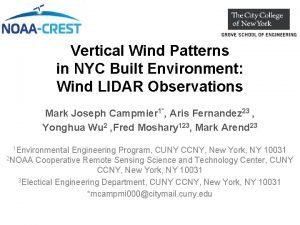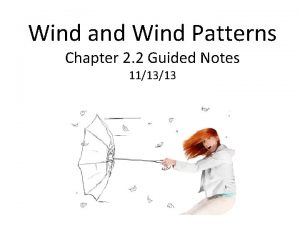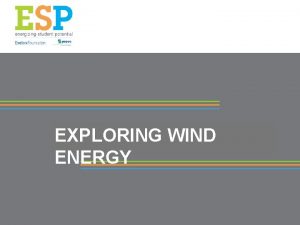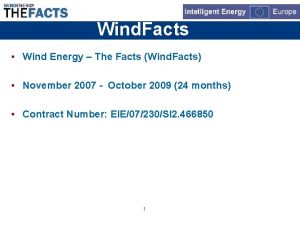Wind Science 101 I Overview of Wind Patterns














![NOAA NCEP-NCAR CDAS-1 MONTHLY 300 mb [ u , v ] climatology January Wind NOAA NCEP-NCAR CDAS-1 MONTHLY 300 mb [ u , v ] climatology January Wind](https://slidetodoc.com/presentation_image/343faacb17b5e85899383e291a7dbbde/image-15.jpg)
![NOAA NCEP-NCAR CDAS-1 MONTHLY 300 mb [ u , v ] climatology July Wind NOAA NCEP-NCAR CDAS-1 MONTHLY 300 mb [ u , v ] climatology July Wind](https://slidetodoc.com/presentation_image/343faacb17b5e85899383e291a7dbbde/image-16.jpg)
![NOAA NCEP-NCAR CDAS-1 MONTHLY Diagnostic above_ground [ u , v ] climatology (m/s) January NOAA NCEP-NCAR CDAS-1 MONTHLY Diagnostic above_ground [ u , v ] climatology (m/s) January](https://slidetodoc.com/presentation_image/343faacb17b5e85899383e291a7dbbde/image-17.jpg)
![NOAA NCEP-NCAR CDAS-1 MONTHLY Diagnostic above_ground [ u , v ] climatology (m/s) July NOAA NCEP-NCAR CDAS-1 MONTHLY Diagnostic above_ground [ u , v ] climatology (m/s) July](https://slidetodoc.com/presentation_image/343faacb17b5e85899383e291a7dbbde/image-18.jpg)






















































- Slides: 72

Wind Science 101: I. Overview of Wind Patterns Eugene S. Takle Professor Department of Agronomy Department of Geological and Atmospheric Science Director, Climate Science Program Iowa State University Ames, IA 50011 WESEP REU Short Course Iowa State University Spring 2011

Outline Global scale 3 -D global circulation patterns and wind energy Surface and upper-air tropical and mid-latitude weather systems, including prevailing westerlies Mesoscale Great Plains Low-Level Jet and nocturnal LLJs Sea-breeze Monsoon circulation Off-shore resources US wind resource maps Forecasting wind resources Atmospheric boundary layer Structure and diurnal/seasonal evolution Impact of static and dynamic stability on horizontal wind speeds and vertical profiles Turbulent flows and interactive wakes




http: //eesc. columbia. edu/courses/ees/climate/lectures/gen_circ/index. html

Non-rotating Earth heated at its Equator Not to scale! Mean radius of the earth: 6371 km Height of the troposphere: 0 -7 km at poles 20 km at Equator 90% of atmosphere is in the lowest 15 miles (24 km) 99% in lowest 30 miles (48 km)




Global Precipitation Patterns



![NOAA NCEPNCAR CDAS1 MONTHLY 300 mb u v climatology January Wind NOAA NCEP-NCAR CDAS-1 MONTHLY 300 mb [ u , v ] climatology January Wind](https://slidetodoc.com/presentation_image/343faacb17b5e85899383e291a7dbbde/image-15.jpg)
NOAA NCEP-NCAR CDAS-1 MONTHLY 300 mb [ u , v ] climatology January Wind speed at 12 km
![NOAA NCEPNCAR CDAS1 MONTHLY 300 mb u v climatology July Wind NOAA NCEP-NCAR CDAS-1 MONTHLY 300 mb [ u , v ] climatology July Wind](https://slidetodoc.com/presentation_image/343faacb17b5e85899383e291a7dbbde/image-16.jpg)
NOAA NCEP-NCAR CDAS-1 MONTHLY 300 mb [ u , v ] climatology July Wind speed at 12 km http: //eesc. columbia. edu/courses/ees/climate/lectures/gen_circ/300 mb. Winds. html
![NOAA NCEPNCAR CDAS1 MONTHLY Diagnostic aboveground u v climatology ms January NOAA NCEP-NCAR CDAS-1 MONTHLY Diagnostic above_ground [ u , v ] climatology (m/s) January](https://slidetodoc.com/presentation_image/343faacb17b5e85899383e291a7dbbde/image-17.jpg)
NOAA NCEP-NCAR CDAS-1 MONTHLY Diagnostic above_ground [ u , v ] climatology (m/s) January Wind speed near surface http: //eesc. columbia. edu/courses/ees/climate/lectures/gen_circ/300 mb. Winds. html
![NOAA NCEPNCAR CDAS1 MONTHLY Diagnostic aboveground u v climatology ms July NOAA NCEP-NCAR CDAS-1 MONTHLY Diagnostic above_ground [ u , v ] climatology (m/s) July](https://slidetodoc.com/presentation_image/343faacb17b5e85899383e291a7dbbde/image-18.jpg)
NOAA NCEP-NCAR CDAS-1 MONTHLY Diagnostic above_ground [ u , v ] climatology (m/s) July Wind speed near surface http: //eesc. columbia. edu/courses/ees/climate/lectures/gen_circ/300 mb. Winds. html

NOAA NCEP-NCAR CDAS-1 DAILY 300 mb height (m) and winds (m/s) 1 Apr 1997 http: //eesc. columbia. edu/courses/ees/climate/lectures/gen_circ/300 mb. Winds. html

Continental and Regional influences Continental scale circulation, jet streams Great Plains Low-Level Jet Nocturnal LLJ Coastal Jets Sea breezes Mountain-valley flows Mountain compression of stream lines Off-shore wind





Mechanism of Low-Level Jets: General Principles Great Plains Low-Level Jet (GPLLJ) Nocturnal Low-Level Jet (LLJ) Coastal Jet (CJ)

Mechanism of Low-Level Jets: General Principles Great Plains Low-Level Jet (GPLLJ) Nocturnal Low-Level Jet (LLJ) Coastal Jet (CJ)

Fp L H Pressure Gradient

Coriolis Force Fc = -2Ωx. V V L Fp Pressure Gradient Fc H

V L Fc Fp Pressure Gradient H

Geostrophic Balance Vg L Fp Fc H

V L Fp Fc H Ff Frictional Force Ff = -Cdv. V

V L Fp Fc H At night, friction is eliminated, flow is accelerated, V increases

V L Fp Fc Coriolis force increase, wind vector rotates and speed continues to increase H

V Vg L Fp Fc H Wind vector rotates and speed continues to increase and exceeds geostrophic wind

Mechanism of the Nocturnal Low-Level Jet: General Principles Great Plains Low-Level Jet (GPLLJ) Nocturnal Low-Level Jet (LLJ) Coastal Jet (CJ)

Rocky Mountains Low Press High Temp High Press Low Temp Missouri River

Bermuda High creates flow from the south in summer over the central US, which is accelerated at night by a terrain-induced pressure gradient H

Wind speed as a function of height during the LLJ peak on March 24, 2009 at 1000 LST from the Lamont, OK wind profiler (Adam Deppe MS thesis, ISU, 2011)

Height above ground ~1 km Great Plains Low-Level Jet Maximum (~1, 000 m above ground) Horizontal wind speed

Mechanism of the Nocturnal Low-Level Jet: Great Plains Low-Level Jet (GPLLJ) Nocturnal Low-Level Jet (LLJ) Coastal Jet (CJ)

Low Press High Temp Low Temp

V Vg L Fp Fc H

Height above ground ~400 m Nocturnal Low-Level Jet Maximum (~400 m above ground) Horizontal wind speed

Mechanism of the Nocturnal Low-Level Jet: Great Plains Low-Level Jet (GPLLJ) Nocturnal Low-Level Jet (LLJ) Coastal Jet (CJ)

Low Press High Temp Low Temp

Coastal Mountains Low Press High Temp Low Temp

V Mountains produce an additional pressure force L Fp Fc H Ff Frictional Force Ff = -Cdv. V

Height above ground ~50 -400 m Coastal Jet Maximum (~50 -400 m above ocean) Horizontal wind speed


Note high winds at mountain ridges

100 km



Musial, W. , and B. Ram, 2010: Large-scale Offshore Wind Power in the United States. Assessment of Opportunities and Barriers. NREL/TP-500 -40745. 240 pp. [Available online at http: //www. osti. gov/bridge]

Take Home Messages Winds are created by horizontal temperature difference (which create density differences and hence pressure differences) Rotation of the Earth creates bands of high winds (prevailing westerlies) at mid-latitudes Interactions with the day-night heating and cooling of the earth’s surface create changes in the vertical structure of the horizontal wind Orographic feature (coastal regions, mountains, etc) create local circulations that enhance or decrease wind speeds

Wind Science 101 II. Atmospheric Boundary Layer Eugene S. Takle Professor Department of Agronomy Department of Geological and Atmospheric Science Director, Climate Science Program Iowa State University Ames, IA 50011 Honors Wind Seminar Iowa State University Spring 2011



High Interannual Variability: Number of Wind Speed Reports per Month ≤ 5 kts at Mason City, IA 1 Oct 2001 – 30 Sep 2002 1 Jan – 31 Dec 1998 Data by Adam Deppe

1 knot = 1. 151 mph = 0. 514 m/s





Number of Occurrences 2 4 6 8 10 12 14 Winspeed (m/s) 16 18 20 22

Height (z) Power Law Logarithmic Dependence Windspeed U* = friction velocity k = von Karman’s constant (0. 40) zo= roughness length

High Interannual Variability: Number of Wind Speed Reports per Month ≤ 5 kts at Mason City, IA 1 Oct 2001 – 30 Sep 2002 1 Jan – 31 Dec 1998 Data by Adam Deppe

Modeling the Atmospheric Boundary Layer


In Tensor Notation: Turbulence options: K = constant One-and-a-half order:

Turbulence Kinetic Energy: ε = dissipation Third Order: ε = q 3/Λ

Conceptual Model of Turbine-Crop Interaction via Mean Wind and Turbulence Fields Speed recovery day H 2 O CO 2 __ Heat __________________ night A conceptual model of turbulence generated by turbines suggests enhancement of near-surface mixing both day and night, which will… reduce daytime maximum temperature in the crop (good) increase night-time temperature in the crop (? ? ? ) reduce dew-duration in crops (good) enhance downward CO 2 flux into the canopy during daytime photosynthesis (good) enhance CO 2 flux out of the canopy at night (? ? ? ) suppress early killing frost (good) help dry down the crop before harvest (good)
 Science is my favourite subject
Science is my favourite subject Contemporary dating patterns are formal patterns
Contemporary dating patterns are formal patterns Mining frequent patterns associations and correlations
Mining frequent patterns associations and correlations Horse latitude
Horse latitude Wind patterns in the caribbean
Wind patterns in the caribbean Which factor causes global wind patterns
Which factor causes global wind patterns Wind von backbord weicht wind von steuerbord
Wind von backbord weicht wind von steuerbord Wind energy science conference
Wind energy science conference Social science vs natural science
Social science vs natural science Mind map main branches of science
Mind map main branches of science Natural and physical science
Natural and physical science Applied science vs pure science
Applied science vs pure science Rapid change
Rapid change Wwwk-6.thinkcentral
Wwwk-6.thinkcentral Why environmental science is an interdisciplinary science
Why environmental science is an interdisciplinary science Julie lundquist
Julie lundquist Hard science and soft science
Hard science and soft science Overview of www
Overview of www Maximo work order priority
Maximo work order priority Uml overview
Uml overview In uml is a connection among things
In uml is a connection among things Vertical overview
Vertical overview Figure 12-1 provides an overview of the lymphatic vessels
Figure 12-1 provides an overview of the lymphatic vessels Overview of the major systemic arteries
Overview of the major systemic arteries Texas recapture districts
Texas recapture districts Walmart company profile
Walmart company profile What is stylistic overview
What is stylistic overview Structured analysis and structured design (sa/sd)
Structured analysis and structured design (sa/sd) Spring framework overview
Spring framework overview Nagios tactical overview
Nagios tactical overview Market overview managed file transfer solutions
Market overview managed file transfer solutions Nfv vs sdn
Nfv vs sdn Sbic program overview
Sbic program overview Unrestricted use stock
Unrestricted use stock Ariba overview
Ariba overview Safe overview
Safe overview Rfid technology overview
Rfid technology overview Overview in research example
Overview in research example Overview of transcription and translation
Overview of transcription and translation Example of project overview
Example of project overview Major systemic arteries labeled
Major systemic arteries labeled Abstract vs summary
Abstract vs summary Solvency 2 pillar 2
Solvency 2 pillar 2 Overview of physical storage media
Overview of physical storage media Example of nursing process
Example of nursing process Marcus scheuren
Marcus scheuren Ospf overview
Ospf overview Architecture review template
Architecture review template Oedipus rex timeline
Oedipus rex timeline Netflow overview
Netflow overview Overview of the national tuberculosis elimination program
Overview of the national tuberculosis elimination program Mpls overview
Mpls overview Azure blob storage price
Azure blob storage price Master data services overview
Master data services overview Overview of cellular respiration
Overview of cellular respiration Overview of aerobic respiration
Overview of aerobic respiration Overview of cellular respiration
Overview of cellular respiration Overview of cellular respiration
Overview of cellular respiration Transformer overview
Transformer overview Kaizen alternatives
Kaizen alternatives Itil brief overview
Itil brief overview Iptv technoligies
Iptv technoligies Overview of mobile computing
Overview of mobile computing Microprocessor topics
Microprocessor topics When was kfc founded
When was kfc founded Sap
Sap Huawei company introduction
Huawei company introduction Eylf meaning
Eylf meaning Introduction to erp systems
Introduction to erp systems Master data services overview
Master data services overview Data cleaning problems and current approaches
Data cleaning problems and current approaches Cuda overview
Cuda overview Counterfeit electronic components an overview
Counterfeit electronic components an overview



